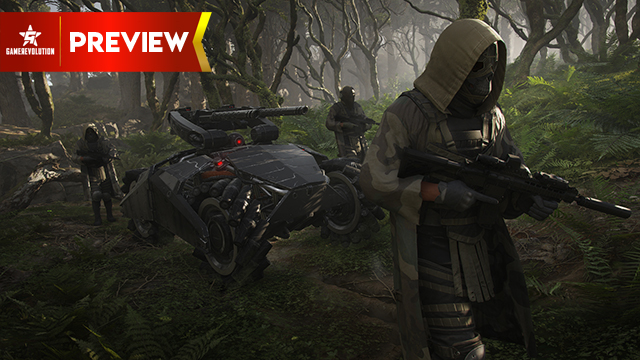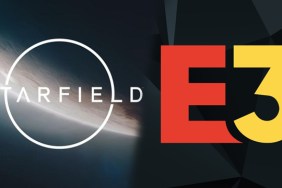Ghost Recon Breakpoint is the sequel to 2017’s Ghost Recon Wildlands that readjusts what realism can mean to a Tom Clancy franchise. Wildlands’ controversial real-world setting full of nation-specific drug cartel enemies is gone, replaced by a fictional, man-made island crawling with antagonistic drones and equally inoffensive human adversaries. Breakpoint looks like a straightforward sequel, but in adding survival features and shying away from pro-interventionist politics, it plays like a more complex cousin to its predecessor.
Returning are military operator protagonist Nomad (the only survivor of a helicopter crash on said island, Auroa) and a huge open world built for tactical firefights. And Jon Bernthal, thanks to some Wildlands DLC that recently dropped.
Bernthal’s Cole D. Walker is a former Ghost gone rogue, now commanding the “Wolves” hunting Nomad and their squadmates. He’s also taken control of Silicon Valley billionaire Jace Skell’s army of drones, originally meant to protect Auroa’s civilians and somehow “solve poverty,” according to Creative Director Eric Couzian. Lastly, along with going from hunters to hunted, players can also add their immediate environment to their growing list of foes.
Ghost Recon Breakpoint Preview | Surviving the elements
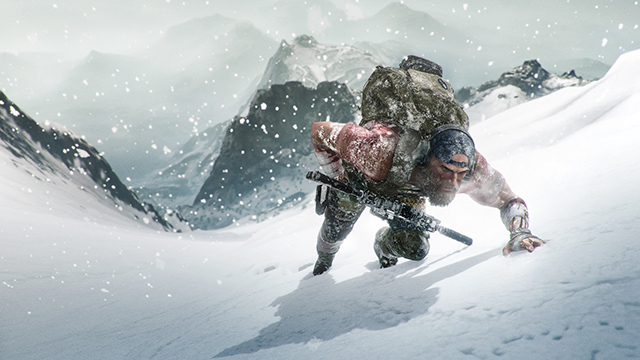
Stress, fatigue, hunger, thirst, and weather “will kill you as sure as any bullet,” says Emil Daubon, writer and military advisor on Breakpoint. If it’s not already obvious, “Breakpoint” literally refers to the point at which a soldier breaks under extreme conditions. Players will need to plan, eat, sleep, drink, treat persistent injuries, and even watch their step on steep surfaces. If you take an incline too fast, you can slip, hurting yourself and possibly calling the attention of enemies.
Where Wildlands let you tackle objectives in any order, Breakpoint pushes that further by granting agency in acquiring them. After our demo began with a mission already in progress, UX and Realization Director Matthew Tomkinson explains this process further.
“To get information you need, you need to interrogate a sentinel soldier, the sentinels being the soldiers under the orders of the Wolves in the game,” he said. “And for that, you can choose to interrogate any in the world.”
Wildlands’ interrogations were mainly a means of tracking extra upgrades, supplies, and top-tier targets. Without seeing these in action in Breakpoint, it’s difficult to know how tedious quietly questioning soldiers in enemy camps or stopping them on the road might become, but the idea of letting players express themselves where they previously couldn’t is by default a more compelling one.
Ghost Recon Breakpoint Preview | Squad goals
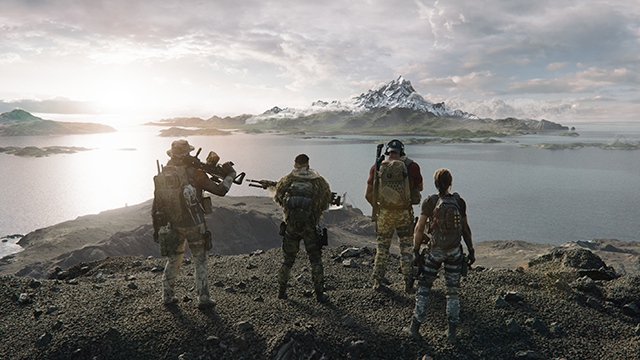
The demo begins with a squad made up of Nomad, Fixit, Fury, and Vasily overlooking an enemy facility as they set up and sit around a bivouac, a makeshift camp where they can eat, hydrate, tweak their loadouts, change classes at will, and more. Classes are handled more fluidly now, with Ghosts able to freely swap between them by visiting a bivouac. Four will be available at launch with more to come in subsequent updates. Tomkinson says there’s still core stat progression for every character, so it seems unlikely that one could spec their skills too thin.
Cutting between the four players’ perspectives, we watch Vasily apply a bandage to their wounded leg, freeing them of the otherwise permanent limp (and stat reduction) with which they approached the small fire. Fury switches to the stealthy, CQC-centric Predator class. When everyone is ready, they tiptoe down the hill, slow enough not to slip and reinjure Vasily’s leg or alert the guards below.
The mission is to extract captured Skell Tech scientist Paula Madero. From their vantage point, the squad makes out several possible entry points, opting to continue down the slope toward a small cabin against a river. It’s empty, aside from a chest containing “loot.” Daubon points out that discovering loot in this way is new to Breakpoint, though little else is currently known about how this system would work in the final game. From here, they hop into a small boat and cross the water toward the compound. Nomad kills the engine before reaching the other side, keeping quiet.
The squad avoids some guards, performs a coordinated multi-kill via Sync Shot (á la Wildlands), Fury performs a brutal melee takedown on some poor soul, and then they all hit the dirt. Accepting a button prompt, the squadmates smear mud on their faces just before the a patrol reaches their position. “Prone Camo” is another new addition Breakpoint, and it allows them to get off a second synchronized shot from the ground.
After more stealthing and sniping, a squadmate uses their torch to cut a hole in the facility’s fence. Meanwhile, Madero is spotted through a second storey window by a player’s drone. After more quiet kills, Nomad makes it to her office, triggering a cutscene in which he reminisces about serving with Walker.
Ghost Recon Breakpoint Preview | Illusion of choice
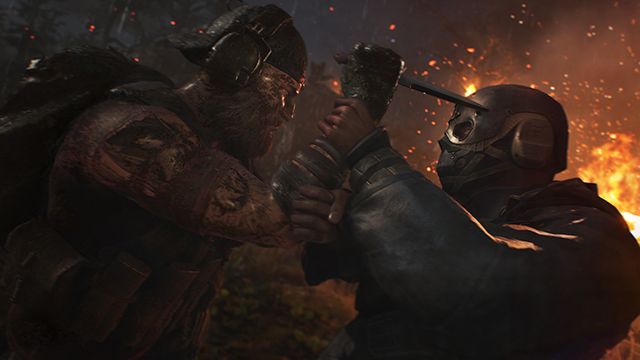
Back in the present, Nomad is given a choice of how to respond to Madero’s suggestion to set charges across the outpost to blow it to hell. Tomkinson later confirmed that these dialogue choices are only be a means of player expression as the mission can only end with setting off an explosion and escaping. With the new objective in place, Vasily squeezes through the fence breach made earlier, joining the rest of the squad in quietly arming the charges. All that’s left is for Nomad to fetch Madero from her office for exfiltration.
Their second conversation is cut short thanks to a surprise attack by Flycatcher, one of Walker’s Wolves. Following a cutscene in which Nomad narrowly saves Madero from a death by drone, he makes use of the new “carry body” feature and jogs her to the exit. Daubon points out that Breakpoint adds the option to move friendly and enemy bodies, usually for the sake of stealth or saving allies, giving the mechanic two practical uses.
With the squad back together and a hijackable helicopter just outside, they shoot their way through more flying and vehicle-sized drones and the building blows. Fury uses a Panther class ability to drop a smoke bomb for cover and they make their escape, marking the end of the demo.
Ghost Recon Breakpoint Preview | More, more, more
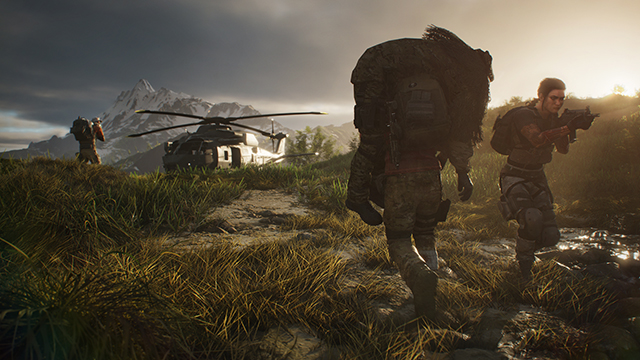
In terms of mechanics and features, Breakpoint seems like an expectedly iterative sequel to Wildlands. Based on the short demo, the level and mission design, combat loop, and narrative tone seem mostly unchanged. New features like survival mechanics, prone camo, loot, more vehicles (that are supposedly easier to control), at-launch PVP, more diverse biomes including snow and a volcano, and endgame raids feel like unsurprising yet welcome tweaks to a popular, two-year-old ongoing game.
What feels more worth noting is the larger shift in narrative context. Tom Clancy stories are known for anchoring themselves in at least a surface layer of real-world military politics, Wildlands included. The titular “wildlands” referred to the very real hills of Bolivia, which in this fictional case were overtaken by the Santa Blanca drug cartel invading from Mexico. Rainbow Six, Splinter Cell, and other Ghost Recon games historically pitted players against foreign terrorists, with occasional exceptions. The recently released The Division 2 is set in a post-apocalyptic Washington D.C. The Clancy brand is definitively political, at least to a point no matter how Ubisoft wants to deny that.
So, it’s tough to ignore Breakpoint’s sudden sociopolitical shift. And it is a shift as opposed to a lack of politics, because we can’t pretend a story about the unforeseen ramifications of a tech billionaire’s business plan has no basis in reality. Will Breakpoint deconstruct the occasionally destructive naivete of Skell’s real-life counterparts? Given Ubisoft’s past aversion to committing to political statements, probably not. But the game’s conflict should be more palatable for those who interpreted Wildlands’ narrative thrust to be “Kill the Mexicans who took over Cocaine Mountain.”
Creative Director Eric Couzian insists Skell’s “intentions are good, to make the world a better place,” so it’s possible his accidental creation of an evil, mechanized army could turn out to be incisive social commentary.
Ghost Recon Breakpoint Preview | A varying tone
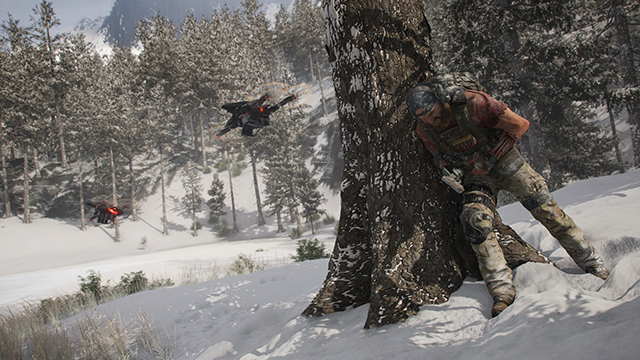
And to be fair, the damn Predator made an appearance in the last game, so we know the series’ tone is malleable, even to the point of being fantastical. A trailer played at the end of the Breakpoint demo showed off an enemy base adorned with little lava waterfalls. The “realistic” elements of Ghost Recon seem to be pivoting away from international relations and doubling down on the struggles of the soldiers themselves, regardless of where in the world they’re struggling.
In this case, the best hints at the series’ current take on realism probably lie in the games’ subtitles. Treating serious injuries, lying mud-smeared and prone, and suffering from hunger and thirst certainly evoke “Breakpoint” more directly and less controversially than “Wildlands” referred to Bolivia, a real place where real people actually live.
In the brief time we got to spend with the game, Ghost Recon Breakpoint felt like a more complex, feature-rich version of Ghost Recon Wildlands with less political baggage. The developers on-hand were pretty tight-lipped about the story, specifically why Walker turned against his Ghost brothers and why he hacked and stole Skell’s drone army. There’s surely going to be much more to learn about and unpack in the coming months leading up to its October 4 release date. And with E3 barely over a month away, we can expect to see more of the game soon and how far it adheres to or distances itself from its predecessor.
